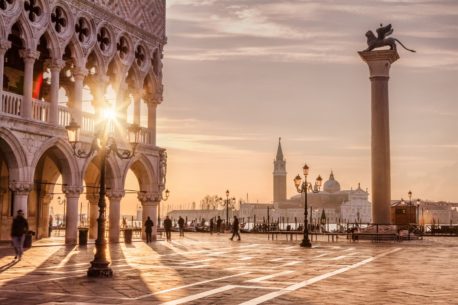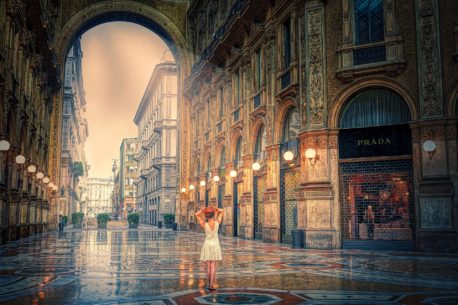
Model of the Renaissance “ideal city”, called the “Small Athens” of the Po valley, it is actually a “Small Rome” since it was conceived by its creator, the Prince and patron Vespasiano Gonzaga Colonna, on the model of the ancient Roman cities.
Vespasiano, as Viceroy of Navarra in Spain, had already planned the city of Pamplona. However, when he decided to rebuild his hometown of Sabbioneta, he wanted this new project to be an expression of the Renaissance culture with its modern and functional vision of “the ideal city”.
You will be entering the town from Porta Vittoria (1597) and from there you will walk by the Chiesa dell’Incoronata (1586-1588), home also to Vespasiano’s mausoleum with the bronze statue of the Prince sculpted by Leone Leoni. A few more steps and you’re in the main square Piazza Ducale and the Palazzo Ducale which was the public hub of this city-state and definitively worth a visit.
A ghetto was never actually established and the fact that the Synagogue you will be visiting next is practically adjacent to the Palazzo Ducale is another sign of the local rulers’ tolerance towards the Jews. The Synagogue, built in 1824, is enriched by a beautifully painted and decorated vault.
The last three pearls left to visit are the incredible: Teatro Olimpico, another Renaissance “ideal project”, then the Galleria degli Antichi, and the connected Palazzo del Giardino (Palace of the Garden), an externally plain white building, with a gallery that once housed the Gonzaga collection of antique Roman statuary and hunting trophies. While the architectural design of the gallery is striking, the richness of the interior decoration of the palazzo is also dazzling.

This iconic and wonderful city includes within its boundaries one of the largest ghettos ever built which can be defined almost as a city within the city. The ghetto is part of one of the Venetian districts called “Sestiere di Cannaregio” – “Sestiere” from the Italian word “sesto” meaning one sixth – in which many […]

Milan never had a stable Jewish community mostly because for many centuries Jews were banned from the city until about the end of the XVIII century, when the first significative afflux of Jews from other parts of Italy and Europe took place. This continued until today, making Milano the 2nd largest Italian Jewish Community after […]